- Home
- How to Paint Good Art
- Principles of Art
We Use the Principles of Art to Create Successful Paintings
Learning the basic principles of art made me a better painter.
Painting takes practice, lots of practice. While we are practicing, it's good to learn the fundamental principles of good paintings.
Art elements and principles appear over and over in good paintings. The elements and principles work together for us to create successful artwork.
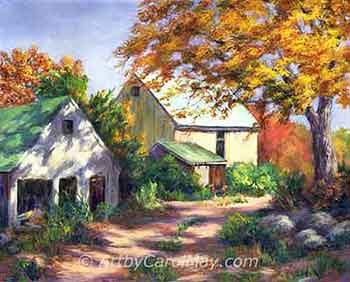 Use the principles in your artwork.
Use the principles in your artwork.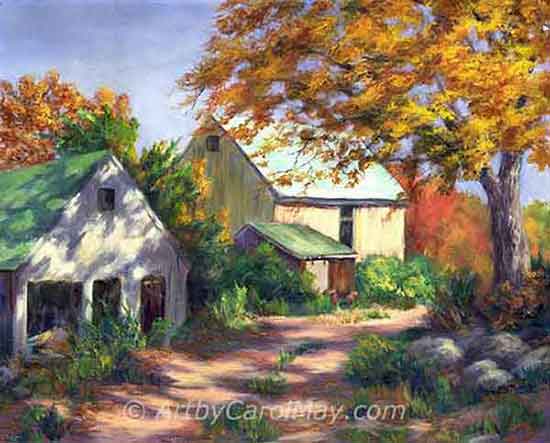 Use the principles in your artwork.
Use the principles in your artwork.What Are the Principles of Art?
Art principles are the rules that govern how an artist uses the elements of art.
Let's see how this works:
How Many Principles of Art Are There?
Artists have different opinions on how many art principles there are.
We will look at about ten principles of art and how they are used in the barn painting below. Several of the principles are overlapping or may be used together.
But first, what's the difference between art elements and art principles?
We use the elements of art in our paintings according to the principles of art.
What Are the Elements of Art?
Paintings are made with the art elements of line, shape, form, space, texture, values and color. We can speed up our art journey by learning and using these elements in our artwork.
Line is the basic and most common element of art. It is a mark that starts at one point and continues on. It may be a straight, curved, zigzag, etc. Artists may use actual lines or imply lines by the principle of movement.
Shape is a two-dimensional representation of an object. We see it as the height and width of an object.
Form is the three-dimensional representation of an object, height, width and depth.
Space can be defined as positive or negative space. An object takes up the positive space. The area around an object is called negative space.
Texture refers to the surface of items. Silk has a smooth texture and wool is rough textured. Artists may paint the textures using various values and colors. Or we may create an actual texture in the paint with brush marks or palette knives.
Values are the light and darkness of an item. Value ranges from white to black and all the variations in between. Colors also have values. Yellow is the lightest value and purple is the darkest color value.
Color is the joy of painting art. We can paint love, peace, confusion or harmony all by using color.
Successful oil, acrylic and watercolor paintings all use the art elements.
How Do We Use the Principles of Art?
Let's look at 10 common art principles: rhythm, movement, proportion, balance, emphasis, contrast, unity (harmony), pattern, repetition and variety.
Whew, that sounds like a lot!
We will take them one step at a time and see how we can use them in our paintings.
Rhythm and Movement
A painting can flow like rhythm of music.
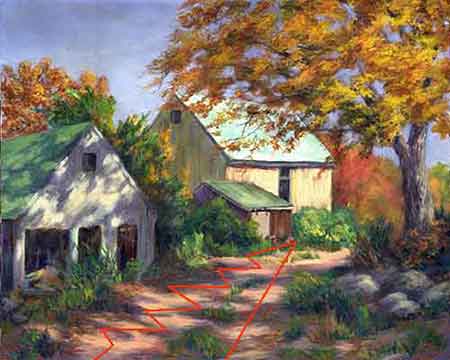 The viewer moves through the painting.
The viewer moves through the painting.Rhythm is created by the spaces between the elements in the painting.
The red line on the left indicates the rhythm created by the patches of sun and shadow on the road.
Movement is indicated in a line like a bird flying or a man running.
Movement can also be the path of the viewer's eyes, as they move through the painting.
The road (indicated by the straight red line on the right) moves the viewer into the painting and up to the large barn.
A good composition provides a way for the viewer to enter the painting.
Balance and Proportion
This is not the barn painting, but a photograph that beautifully demonstrates the principles of art of proportion and balance.
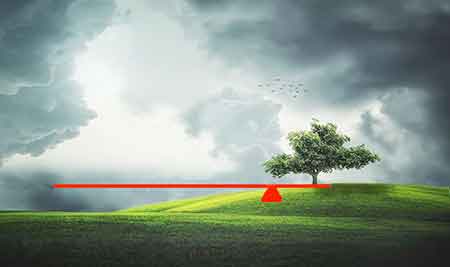 Balance the painting
Balance the paintingBalance in paintings works like a teeter-totter.
If we have a large object on one side of the painting, we need more space on the other side for balance. The rule of thirds creates perfect balance.
Proportion means the objects in a painting relate to each other's size naturally.
Proportion is easy to overlook when we are engrossed in painting.
Don't concentrate so much on one item and paint it too big compared to the other items in the painting. All the objects in a painting need to be in their natural proportion to each other.
Pop-art may not be in proportion, but we use proportion when we want things to look natural.
Emphasis and Contrast
Emphasis and contrast are the principles of art used to create focal points. Movement brought the viewers up the road to the large barn.
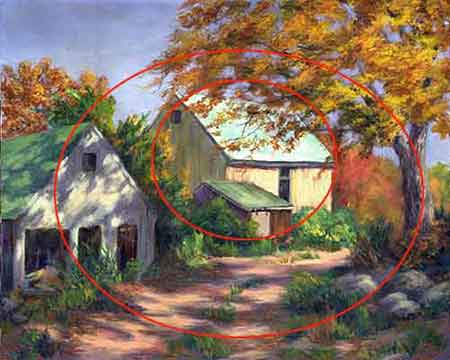 Use emphasis and contrast in the focal point.
Use emphasis and contrast in the focal point.Emphasis brings attention to things in the painting, in this case the large barn.
The barn's size and values emphasize it.
Contrast also, brings attention to things in the painting. Notice that the front wall of the big barn is the lightest thing in the painting.
Squint our eyes and look at the things in the large red circle. We see everything in the large circle is a darker value than the barn wall.
In real life the sky would be the lightest thing, but the barn wall was painted lighter to emphasis it.
In addition to values, artists may use contrasting colors, texture and hard edges to create emphasis.
Unity and Harmony
Unity and Harmony are quite similar. They mean all the parts of the painting are working together. The items in the painting relate to each other.
Different parts of the painting are not competing with each other. The painting feels complete and peaceful.
Patterns and Repetition
Patterns and repetition give the viewers more to see. It keeps them in the painting longer.
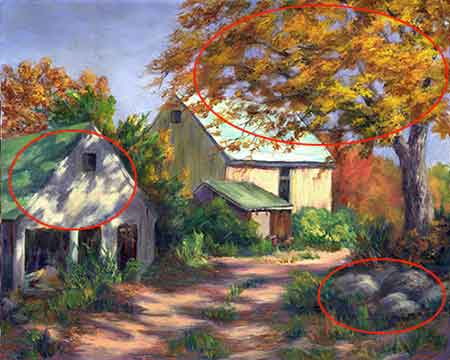 Patterns and repetition provide interest.
Patterns and repetition provide interest.Patterns are things repeated over and over to create a design. That's great on fabric, but in paintings we need to vary our patterns.
Notice the pattern of shadows on the front barn. Each shadow is a different shape. There is a variation in their colors. Some of the shadows go up on the roof for more variation.
Repetition of objects, colors or lines can be useful. There is a repetition of rocks in the right foreground.
A single, lone rock would detract from the focal point. Multiple rocks added interest without detracting from the barn.
The leaves of the large tree on the right are another repetition. They are painted with a variety of shape, color and values to keep them from being boring.
Variety
Variety keeps our paintings interesting.
Notice in the barn painting there three separate buildings.
- Each building is a different size.
- Each building is a different color, a different shape and different values.
- There is a variety of colors, even in the same object.
That's variety! It keeps our paintings from being boring.
Variety is the main key to painting good art!
What Have We Learned?
Artists use the elements of line, shape, form, space, texture, values and color according to the principles of art.
How do the principles use the art elements?
- Rhythm is made by repeating shapes, colors or values.
- Movement pulls the viewer in and thru the painting.
- Balance in painting works just like a teeter-totter.
- Proportion means the size of each object is true to reality.
- Emphasis makes things stand out in the painting.
- Contrast is created by opposing colors, values or edges.
- Unity and harmony are when everything is working together.
- Patterns and repetition are repeating things in the painting.
- Variety resists boredom.
Now that we understand these individual elements and principles, let's see how they all work together in the act of painting.
What's the Goal of Using the Principles?
When I was doing the barn painting, was I consciously checking off a list of ten different principles? No.
While I'm painting, all the principles come together to help me focus on four main goals:
- A Strong Composition: I use the principles of balance, movement, and rhythm to arrange the elements in a pleasing way.
- Accurate Values: Understanding contrast is key to getting my lights and darks right.
- Harmonious Color: The principle of unity helps ensure my color choices work together.
- A Clear Focal Point: I created a focal point using emphasis and contrast.
See how it works?
The principles aren't a list of technical rules to memorize and forget. They are the building blocks.
By learning them, you develop an instinct for what makes a painting work.
When we focus on composition, values, color, and a focal point, we are using the principles of art whether we think about them or not.
They make painting a joy!





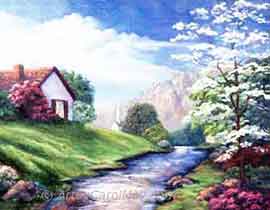 Are you new and want to learn how to paint art? On this page, you’ll find ideas of what to paint, the supplies we really need, the fundamentals of good art (values, color, composition), and beginner-f…
Are you new and want to learn how to paint art? On this page, you’ll find ideas of what to paint, the supplies we really need, the fundamentals of good art (values, color, composition), and beginner-f…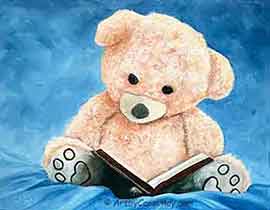 Are you eager to learn how to oil paint? What are the essential supplies for oil painting? What do we need for clean-up and how long do oil paintings take to dry? Learn the rules of oil painting and t…
Are you eager to learn how to oil paint? What are the essential supplies for oil painting? What do we need for clean-up and how long do oil paintings take to dry? Learn the rules of oil painting and t…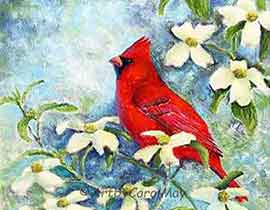 How do we create a focal point in art? Where do we put the focal point? How do we find the focus of an artwork? Should all paintings have a center of interest or can they have more than one? Learn fro…
How do we create a focal point in art? Where do we put the focal point? How do we find the focus of an artwork? Should all paintings have a center of interest or can they have more than one? Learn fro…